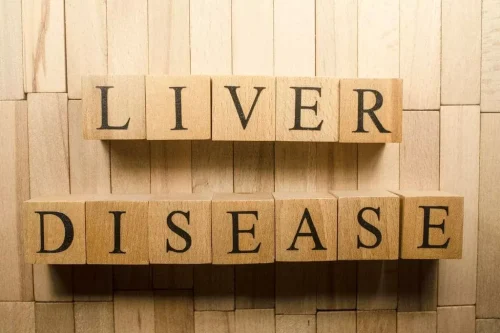Individuals who complete rehab often continue participating in meetings because the 12 Steps help them focus on sobriety. Outpatient alcohol treatment programs vary in intensity and hours but allow individuals to live at home or in a sober living environment and attend treatment sessions at the facility. This also allows them to continue to fulfill responsibilities such as work, school, and family obligations. Programs can last for several months and may include individual and family counseling, behavioral therapy, and mutual-help groups. Alcoholics Anonymous or AA is the original recovery program that brought the world the 12 steps of recovery.
Outpatient Rehab
In addition, learning relaxation techniques can help those in recovery by reducing the tension that is often an immediate trigger of relapse, become comfortable with uncomfortable feelings, and release negative feelings that can trigger relapse. These support groups and their recovery Steps provide social support to people when they need it. This support can help people stay off drugs or alcohol and make other positive changes in their lives, according to the National Institute on Drug Abuse. Diagnosing drug addiction (substance use disorder) requires a thorough evaluation and often includes an assessment by a psychiatrist, a psychologist, or a licensed alcohol and drug counselor.

Critical medical anthropology model

The severity of addiction and drug or drugs being used will play a role in which treatment plan is likely to work the best. Treatment that addresses the specific situation and any co-occurring medical, psychiatric, and social problems is optimal for leading to long-term recovery and preventing relapse. Dialectical behavioral therapy (DBT) is a form of CBT therapy that approaches intense or uncomfortable emotions and uses processes to help people manage them safely. This therapy aims to improve self-esteem, provide stress-management skills, change unhealthy behavior patterns, and encourage individuals in recovery to remove triggers from their life through healthy skill-building.
What Are the Most Popular 12-Step Programs?
Residential treatment programs, sometimes referred to as inpatient treatment programs, provide the highest level of rehab services for individuals suffering from alcohol addiction. Residential programs are offered at professional rehab facilities, providing an alcohol-free environment that eliminates any potential triggers and temptations to drink. Programs usually start with medically managed detox and require individuals to live on site for the duration of the program. Residential rehab may include medical care, mental health services, administration of medications, group and individual counseling, behavioral therapy, experiential workshops, and wellness and fitness activities. Choosing to enter treatment or begin any kind of substance abuse recovery program can be scary, but it is an important step in changing one’s life. The alcohol and drug addiction recovery process can look different for each person and is based on the level of care determined for a person, so treatment is often tailored to the individual.4 Program lengths vary.
Withdrawal therapy
Recovery from addiction is not a linear process, and increasingly, relapse is seen as an opportunity for learning. Studies show that those who detour back to substance use are responding to drug-related cues in their surroundings—perhaps seeing a hypodermic needle or a whiskey successful drug addicts bottle or a person or a place where they once obtained or used drugs. Such triggers are especially potent in the first 90 days of recovery, when most relapse occurs, before the brain has had time to relearn to respond to other rewards and rewire itself to do so.
- By contrast, most adolescents relapsed in social settings when they were trying to enhance a positive emotional state.
- When people take drugs, the brain is flooded with chemicals that take over the brain’s reward system and cause them to repeat behaviors that feel good but aren’t healthy.
- Psychodynamic therapy helps individuals explore their emotions and experiences to uncover how their subconscious thoughts relate to their thoughts and behaviors.
The next most frequently used drugs were cannabis, cocaine, stimulants, opiates, opioids and crack. AA uses the 12-step formula outlined in The Big Book to ask members to take responsibility for improving their behaviors and assisting others in their recovery. Since the development of AA, many other self-help groups have incorporated the 12 Steps into their program. After re-entering treatment at Towns Hospital in December 1934, Wilson experienced a spiritual awakening that caused him to stop drinking.

Treatment Options
- It’s important to remember that outpatient programs do not sequester patients from the real world; therefore, patients are at greater risk of encountering triggers that can result in relapse behaviors, especially in early recovery.
- Even after you’ve completed initial treatment, ongoing treatment and support can help prevent a relapse.
- Determining the right treatment plan is an important part of recovering from addiction.1 One factor considered in addiction treatment is the level of care a person may require or benefit the most from.
- There are multiple types of treatment facilities that can help you or your loved one recover from substance abuse.
The goal of detoxification, also called “detox” or withdrawal therapy, is to enable you to stop taking the addicting drug as quickly and safely as possible. For some people, it may be safe to undergo withdrawal therapy on an outpatient basis. Outpatient counseling can help people understand addiction, their triggers, and their reasons for using drugs. This form of treatment can be done at a doctor’s office or via telehealth appointment.
- A small group of adolescents relapsed when facing interpersonal difficulties accompanied by negative emotions and social pressures to drink or use.
- One advantage of mutual support groups is that there is likely someone to call on in such an emergency who has experienced a relapse and knows exactly how to help.
- It may include rediscovering a work or social role, finding new recreational interests, or developing a new sense of spiritual connection.
- The reward pathway, known as the mesolimbic pathway,[26] or its extension, the mesocorticolimbic pathway, is characterized by the interaction of several areas of the brain.
- There are many different paths to substance use recovery, and 12-step programs are just one resource that people may find helpful.
- Yet sustained, personalized recovery services are essential because treatment is just the first step toward growth and finding a high quality of life without substances.
NIH launches program to advance research led by Native American communities on substance use and pain

